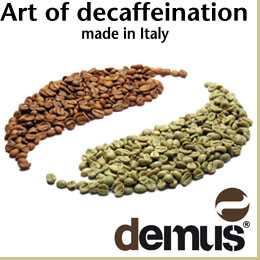Water affects many aspects of espresso, from the coffee’s taste to the longevity of brewing equipment. Achieving great coffee while protecting the espresso machine requie a balancing act—a challenge that water treatment specialists and great coffee bars are taking on together.
There is a simple truth about brewing espresso that you might not want to hear. The fact: Most espresso-machine maintenance issues are caused by water, the one substance that touches nearly every part of the machine. Minerals in water are the culprits, coating the inner workings of the machine and impeding its performance. The more minerals the water contains, the harder or more damaging it can be. Particles will build up on—or scale—pumps, boilers and valves.
But minerals are also what make coffee taste good, carrying its body and aroma to the palate. Ideally, brewing water contains certain amounts of specific kinds of minerals. So coffee flavor is priority one, while brewing equipment must simultaneously be guarded from damage.
All espresso machines must be occasionally descaled; even distilled water will create calcium buildup over time. Since good brewing water requires mineral content, the key is to minimize the need to descale by removing the most damaging minerals while keeping enough of them in the water to enhance the
coffee’s taste.
WATER: NATURE’S SOLVENT
“Water contains, to some degree, everything it comes in contact with,” says Terry Zinowitz, owner of Espresso Parts Northwest. At its source, water often travels out of mountainous environments through granite, sandstone and other rock, picking up minerals and debris along the way.
Generally, water that travels through mountains is soft (low in mineral content) because it comes in contact with solid rock and doesn’t pick up much debris. Conversely, water that travels through sand and soft limestone (as is common in the desert) is harder because it picks up lots of minerals. Water quality can be different from building to building, too, due to plumbing and municipal water supplies that can change seasonally.
With so many water-quality variables to consider, opinions abound on the best water characteristics for brewing espresso, where mineral content is measured as parts per million of total dissolved solids (TDS). “Parts per million offers a standard range for total dissolved solids in water,” says Zinowitz, who has been servicing espresso machines for 20 years. “But there are so many different filters that treat so many water situations.
There isn’t a onesize-fits-all solution. You need an expert.”
Water testing, done free of charge by some filtration companies, will reveal the following characteristics:
1. Water Hardness—the measure of scaleforming compounds calcium and magnesium. Just as the right amount of salt brings out the flavor of food while too much will overpower it, “calcium is a strong flavor bonder to the organic makeup of the coffee,” says Skip Finley, technical director at Cirqua Customized Water. “The right amount of calcium gives coffee a well-rounded flavor. Too much, and it starts to taste like minerals”.
2. Total Dissolved Solids (TDS)—all of the substances present in the water, in their molecular or ionized form. TDS is the measure of a broad array of chemical contaminants in water that includes all inorganic and organic substances present in a molecular or ionized form.
3. Alkalinity—As it pertains to espresso equipment, alkalinity indicates the potential for minerals to form scale. Bicarbonate (alkalinity) breaks down when heated and combines with calcium and magnesium to form hard compounds that can precipitate as scale.
4. pH—a measure of the relative balance between acid and alkaline substances in water. It indicates whether water has a tendency to be corrosive (as acid) or to form scale (as alkaline). A pH between 6 and 8 is ideal because coffee is fairly acidic itself, at a pH of 5 or 6.
THE BALANCING ACT
Companies such as Cirqua Customized Water, Water & More, and Everpure have built their businesses around testing and formulating water. They see the effects this can have on coffee every day. “Iron can make coffee sour, whereas sulfur masks the coffee’s flavor,” says Finley of Cirqua. “Sulfites can have dramatic effect—even if everything else in the water is balanced, they can flatten coffee’s body and taste.” Chlorine is often added to water to get rid of decaying plant material it has picked up along the way. “But even at small parts per billion,” says Finley, “the human body can taste and smell chlorine.
” If water is too pure, though, it will corrode soft metal—most typically copper or weaknesses in stainless steel—causing pinhole leaks when under pressure. If stainless steel is not of a certain grade—if there is a small inclusion in it—water can find those spots and weaken them further. (All boilers in Nuova Simonelli machines are made of nickel-plated copper. This aids expansion and positively affects coffee’s taste.) Water that’s too pure will have an affect on taste, too. “You want a small amount of ‘seasoning’ [minerals] to plate the equipment,” says Finley. “If not, the water will taste metallic.”
So, how do we accomplish the right degree of hardness, TDS, alkalinity and pH? Years ago, a softening cartridge was the premier way to treat water. “It was easy, and removed all of the minerals that would damage equipment,” says Sandra Kaltner of Water & More. “But it often removed too much calcium. Also, alkalinity is unaffected by a softener, so scale can still build up.”
Reverse osmosis (RO), the process of stripping minerals out of water and then remineralizing it to the proper level, is a technology that Cirqua pioneered and continues to develop. Everpure has followed suit with its own version. (Cirqua and Everpure are the largest suppliers of water treatment worldwide.) RO addresses all minerals, removing about 97 percent of them. “Then you blend the pure water and the hard water to create the right blend,” says Finley, “which addresses both scale and taste.”
Blended RO may be the ideal solution for water with high mineral content. For a low-mineral water supply, a liquid mineral injection system will add the necessary minerals to the mix and constantly regulate the level of minerals in the water, adjusting it in real time as changes occur in the water source.
Water & More, the leading manufacturer of water filtration systems in Europe, uses fourstage filtration that consists of pre-filtration, ion exchange, activated carbon filtration and fine filtration, including filtration of the bypass water. “Ion-exchange resins remove magnesium and calcium,” says Kaltner. “In addition, special layers of activated carbon remove bad taste and odor [e.g., chlorine]. Finally, fine particles are removed by a final fine-filtration step.” Water & More’s filters feature single-head technology (one filter head for all applications, sizes and filter systems), which Kaltner says increases their cost-efficiency.
WATER’S EFFECT ON ESPRESSO
Recent testing by Cirqua also reveals that varying mineral contents in water can change the extraction times of espresso. Alkalinity buffers acidity and creates what Finley calls a gum barrier, protecting equipment when extracting espresso. Different calcium levels can create more resistance, “almost like fiction through the coffee bed.”
We already know that an incorrect grindparticle size (too coarse or too fine) affects how coffee extracts—either too little or too much. The same thing can occur with too much or too little alkalinity. If the water’s alkalinity level is too high, it creates a thick gum barrier that will crack the coffee bed when forced against it.
“Instead of water touching all of the grounds, it travels through cracks and underextracts,” says Finley.
However, if there is too little alkalinity in the water, thus lacking any gum barrier, cracks and stratification around the inside edges of the portafilter can cause underextraction. (Preinfusion can, however, help to correct this, as can proper tamping.)
Ideally, alkalinity will be at 40 parts per million, slowing the water down just enough to make contact with all the grounds, providing an even extraction.
It may seem daunting to add water quality to a coffee bar’s long list of concerns, but there are filtration systems that can make it easy, and the end result is worth it. The core of the specialty coffee business is consistent, quality coffee, and the perfect cup can be achieved only by using water that matches the quality of the coffee. Water affects everything: your coffee, your equipment, your customers and your success.
OFFICIAL BREWING STANDARDS (SCAA)
The Specialty Coffee Association of America’s technical standards committee recently updated and published standards for brewing water. Acceptable brewing water must have the following characteristics:
1. No odor
2. Clear of color
3. Free of chlorine, iron and sulfur compounds
4. TDS: 150 ppm
5. Calcium: 3-4 grains
6. Alkalinity: 40 ppm
7. pH: between 6.5 and 7
8. Sodium level: 20 mg



















